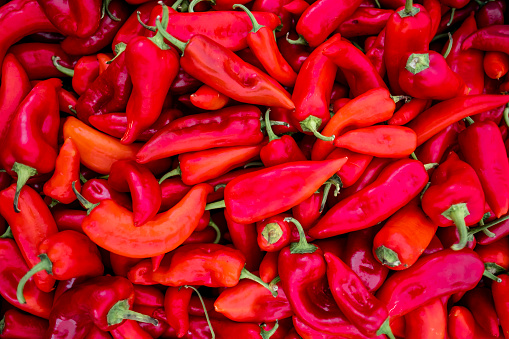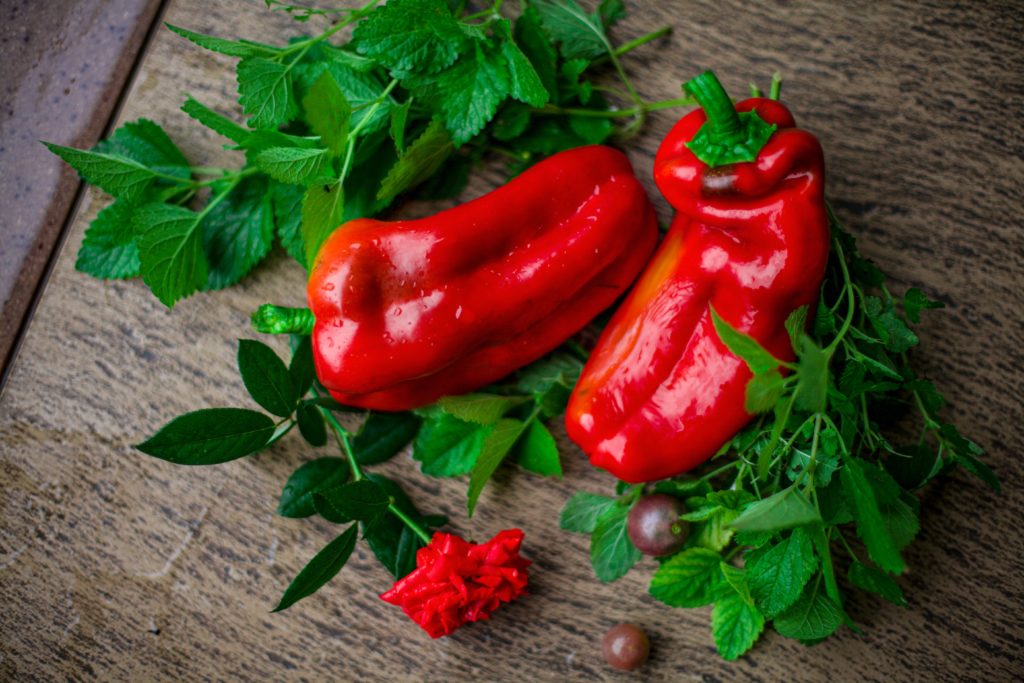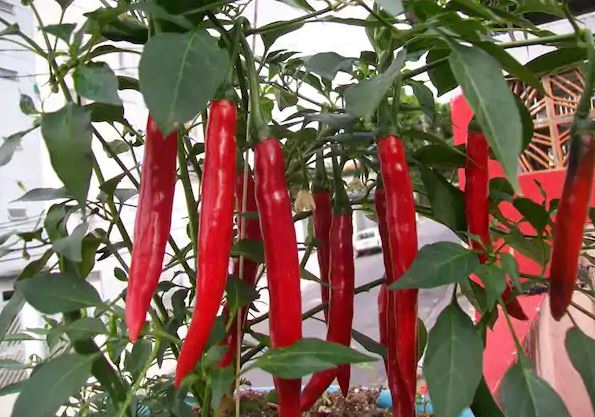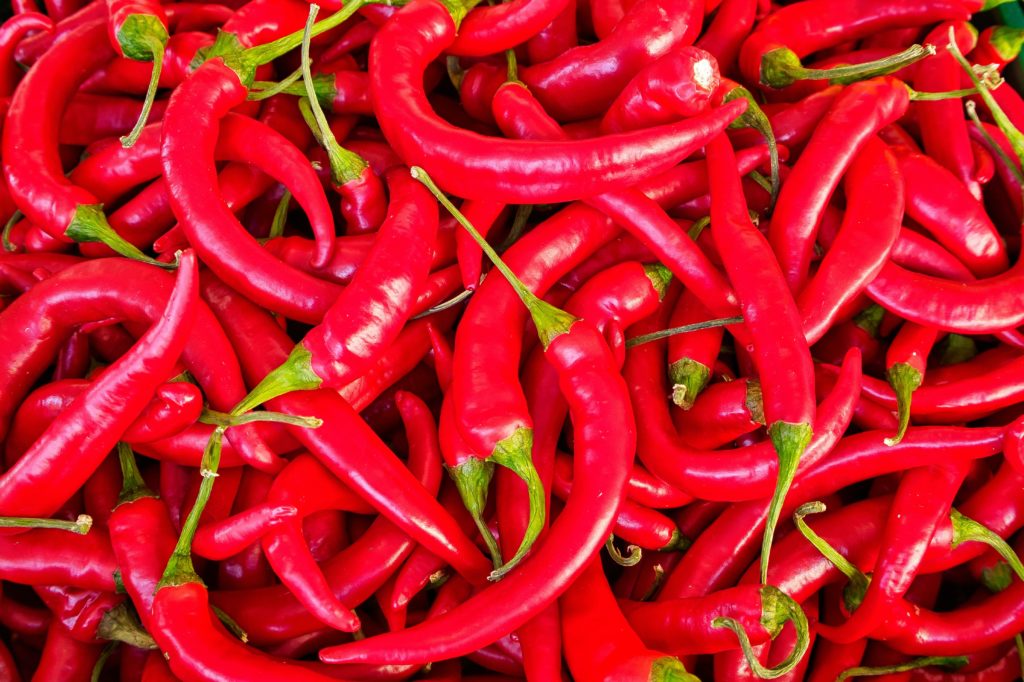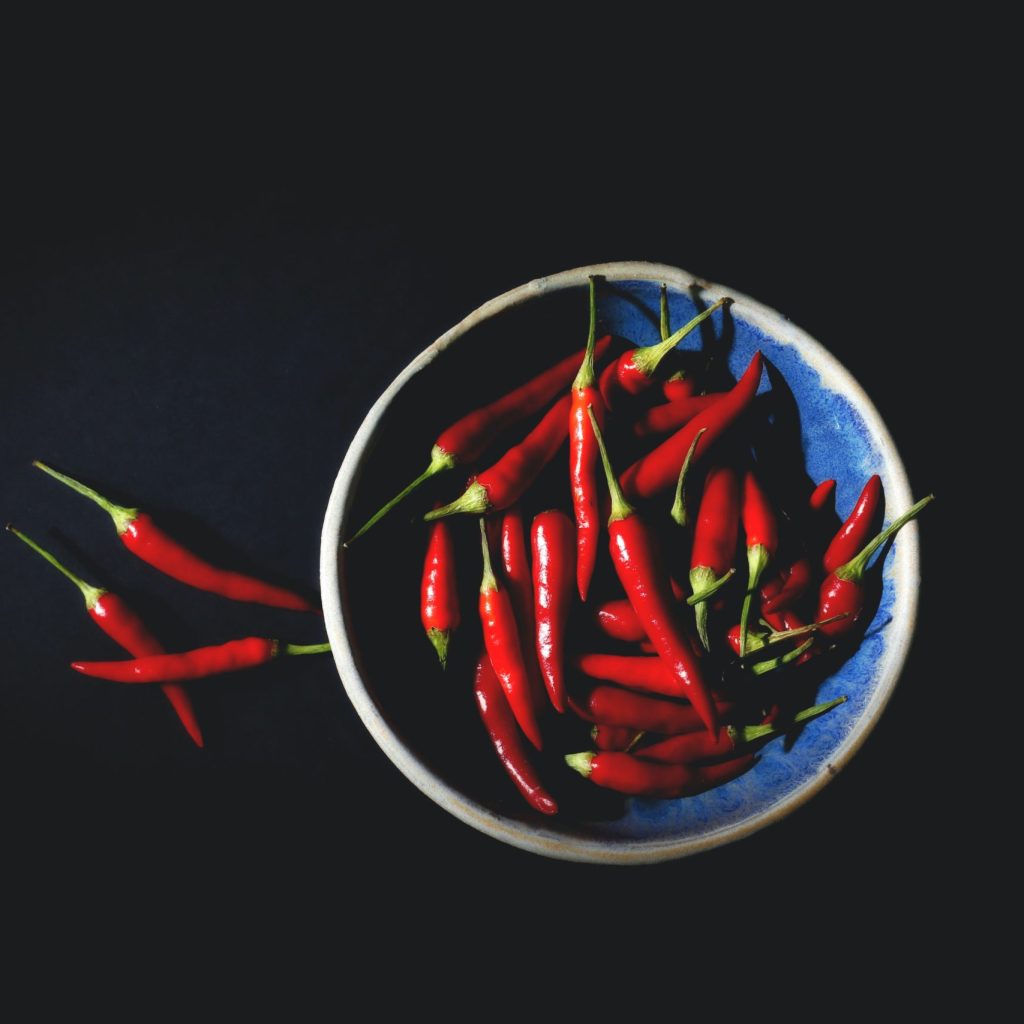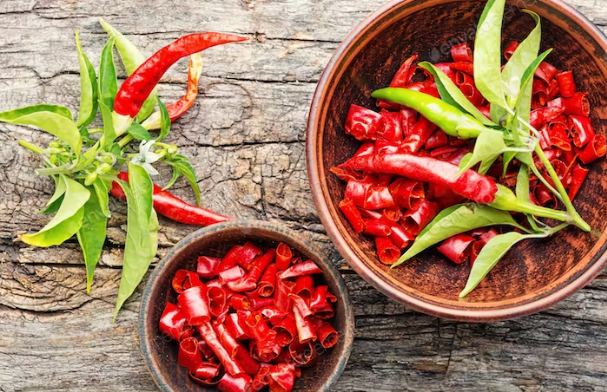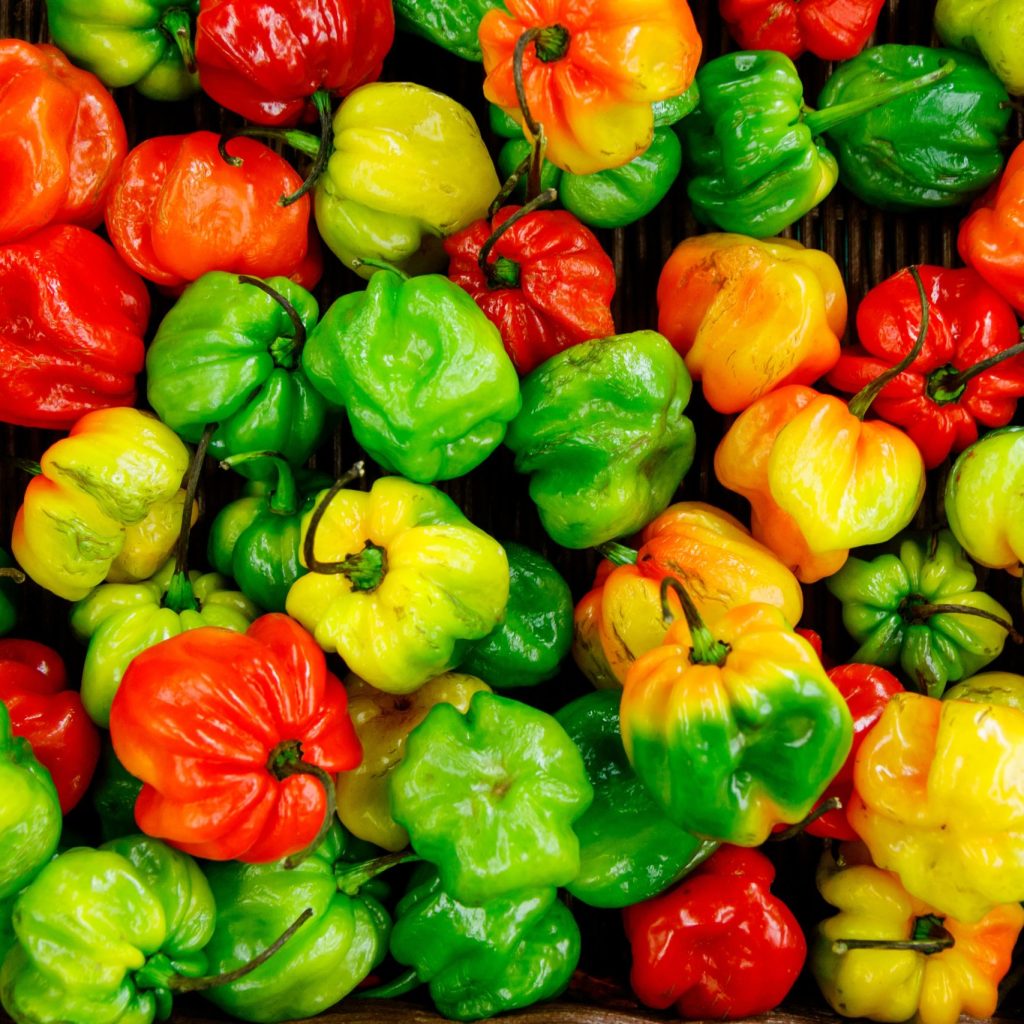Hot peppers are a delicious and spicy fruit that is loved by many. They are also used in cooking, as they add flavour and spice to the dishes.
Hot peppers were first discovered in Central America. They were then spread by European explorers and settlers to other parts of the world during the fifteenth century.

Source: google.com
Top 10 Variations of Hot Chili Pepper
Chili peppers are a common ingredient in many international cuisines. They can be found in many foods, including stews, soups, sauces, and desserts.
Although there are reportedly more than 50,000 different varieties of peppers in the globe, we’ve compiled the 10 most essential varieties into a compact and practical reference for anyone interested in peppers.
1. Anaheim Pepper
Anaheim peppers are mild chile with a ton of taste without the raw burn that comes with other chilis. They are called after the Southern California city where these mild peppers are farmed, Anaheim. They taste great whether eaten raw, roasted in the oven, or scorched over an open flame.
The peppers are typically green and big enough to be stuffed like chile Rellenos, a popular Mexican dish in which the pepper is stuffed with cheese and meat, cooked in an egg batter, and covered in tomato sauce.
Heat Units: 500-2,500
2. Jalapeño
A margarita’s best companion is a jalapeno. Additionally, they go along well with pizza, guacamole, salsas, and nachos. They can be pickled, sliced fresh for banh mi, or added in small pieces to salads. They take on a new identity as a chipotle pepper when smoked.
Jalapenos vary in heat, with some varieties being mild and others scoring much higher on the Scoville scale, although they don’t typically have a face-melting amount of heat. Remove the seeds and membrane and use only the flesh in sauces and salsas that call for jalapenos to lessen the intensity.
Heat Units: 2,500-5,000
3. Chile de Arbol
You might have seen dry or powdered chile de Arbol at your neighbourhood Mexican grocery store. The pepper is used in salsas, hot sauces, enchiladas, and other dishes. It has a heat level up to six times that of jalapenos. The chiles de arbol’s rich red colour, which endures even after drying, makes them suitable for ornamental uses in addition to cooking.
Heat Units: 15,000-30,000
4. Tabasco
Regarding fried chicken, hash browns, and scrambled eggs, Tabasco is the MVP of diners worldwide. In case you didn’t know, tabasco peppers are used to make the beloved sauce that we all know and adore.
The peppers are called after the state of Tabasco in Mexico, where they are widely grown and used in regional cuisine. The pepper’s colour varies as it ages, turning bright red when fully ripe. Additionally, it is one of the few peppers called “juicy.”
Heat Units: 30,000-50,000
5. Banana Pepper and Pepperoncini
To be clear, pepperoncini and banana peppers are two different vegetables. Banana peppers are taller and thinner, slightly resembling a banana, but have waxy yellow-green skin and a similar taste (mild, acidic). Additionally, pepperoncinis are frequently much juicier. Banana peppers and pepperoncinis do share several uses, despite their differences.
Both of them are frequently added to sandwiches, sprinkled on pizza, and salads. They have a wonderful vinegary flavour that is enhanced by being pickled. Look at the form the next time you’re unsure if you’re eating a banana pepper or pepperoncini. If it comes pre-sliced, don’t dispute it; savour the puckering flavour.
Heat Units: 100-500
6. Scotch Bonnet
When mature, Scotch bonnet peppers are often red or yellow. However, when fully mature, other types can turn orange, yellow, peach, or even chocolate brown- extremely similar to the habanero pepper
Its length and diameter range from 1 to 2 1/2 inches and 1 to 2 inches, respectively. It has a hat-like form similar to the habanero but flatter and broader. Thus the name. Fruity and vibrant with a hint of sweetness, the flavour is. It tastes and is extremely hot, like a habanero, if you’ve ever had one.
There are traces of apple, cherry, and tomato for flavour comparisons.Slice off a piece to taste it, and chew it up if you think it is safe enough to evaluate the heat and flavour.
Heat Units: 80,000-400,000
7. Carolina Reaper
According to Guinness World Records, the Carolina Reaper now holds the record for being the hottest pepper in the world. The scarlet-red, sturdy Carolina Reaper has a curving, wrinkled tail that gives it the name “reaper.”
It is the result of crossing two extremely spicy peppers in the pursuit of a chilli that can give you a headache and numb your tongue. Carolina Reapers commonly make fiery sauces for the courageous (or masochistic).
Heat Units: 1,500,000-2,200,000
8. Poblano Pepper
The Poblano Pepper, which is rather big and heart-shaped, is a staple ingredient in many traditional Mexican cuisines. Is the Poblano Pepper spicy? It is, but not overly fiery. When fully ripe, the Poblano turns a deep reddish-brown and can be dried, at which point it is known as an ancho or mulato. The sweetness of anchos is similar to that of raisins. Because of their high flesh-to-skin ratio, anchos are fantastic for making sauces.
Heat Units: 1,000 to 2,000
9. Habanero Pepper
This tiny, bulbous chilli is extremely spicy; it belongs to the same family as the Scotch bonnet and ranks high on the Scoville scale. Despite their fiery reputation, Habanero peppers can be enjoyed for their delicious taste if you can handle the heat. In the Yucatan and the Caribbean, they are used to make fiery condiments that are widely consumed.
Heat Units: 150,000 to 350,000
10. Rocoto Pepper
This pepper from South America resembles a bell pepper but is much smaller. Like bell peppers, it also comes in bright orange, yellow, and red. Yellow rocotos are known to be the hottest, while red rocotos are the norm. Peppers include distinctive black seeds inside. The hairy pepper gets its name from the fuzzy appearance of its leaves. Rocoto is frequently used in salsa because of its sharp and delicious taste.
Heat Units: 100,000 to 250,000
What are the health benefits of Hot Peppers?
Eliminate Migraines
Give your nose a hot pepper spray. Yes, it might hurt. However, it could also relieve your headaches. The chemical in the portion of the pepper that contains the seeds, capsaicin, is used in a particular mix in the spray. It numbs the trigeminal nerve in your brain, where some migraines and excruciating headaches begin. In research, seven out of ten participants with cluster, tension, and other headaches experienced complete relief for a period. Everyone agreed that the sting was worth it.
Eliminate a Runny Nose
Your doctor has diagnosed you with non-allergic rhinitis if your nose is runny, congested, or sneezing. Your nose will run nonstop but not because of a cold, allergies, or cigarette smoke. If so, inhaling capsaicin may relieve your discomfort. At first, it will make sense, and it might even appear to worsen things. But soon after, the capsaicin will start working. You might not notice your stuffiness for a few months.
Relieve Arthritis
Capsaicin is the critical component in many creams, lotions, and patches that instantly relieve pain by generating heat. One research reduced pain from fibromyalgia and arthritis by half in just a few weeks. Other studies’ findings were less persuasive, indicating capsaicin functions best in combination with another analgesic. In either case, you must frequently reapply it.
Disrupt pain signals
Capsaicin causes nerve cells that ordinarily scream, “Pain!” to experience a heat sensation. Your brain receives the following signal: “Hot!” For ages, people have employed this signal-switch technique to manage their discomfort.
Prevents/Fights Cancer
Capsaicin appears to kill cells associated with more than 40 malignancies in the laboratory, including leukaemia, and liver, pancreatic, lung, and colon cancers. The hot chemical prevents the growth of cancer cells by altering the behaviour of specific genes connected to cancer. However, some studies indicate that capsaicin itself might be connected to cancer. More research is required.
Conclusion
Despite their moderate spicy flavour, hot peppers are a very healthy ingredient. Provitamin A and vitamin C are abundant in this food. It also has many beneficial plant compounds, including flavonoids and capsaicin, which offer protection.
Some research has suggested that the plant compounds found in hot peppers may be beneficial to heart health, and some studies have linked the consumption of hot peppers to a lower risk of mortality. More studies are needed to determine the health effects of hot pepper consumption, but existing research indicates some potential advantages. Those who enjoy spicy foods may want to experiment using fresh or powdered hot pepper in their next dish.
FAQs
1. Which Peppers are the healthiest??
Hotter peppers are better for your health. Capsaicin is a compound found in many peppers but is absent from bell peppers. The amount varies with the type of pepper being used. For instance, the heat level of jalapenos can be up to 16 times that of banana peppers.
2. Can Peppers decrease blood pressure??
Your risk of a heart attack, heart failure, and sudden cardiac death is increased by high blood pressure. High blood pressure can be brought on by high salt diets, a lack of activity, and genetics.
It appears that spicy peppers could potentially be helpful in decreasing blood pressure.
According to the British Cardiovascular Society, capsaicin lowers blood pressure. For those who are at risk for hypertension, these advantages are most relevant .
3. Is the Capsaicin in hot Peppers able to fight cancer??
Researchers from the Wayne State University School of Medicine discovered that capsaicin inhibits the development of leukaemia and breast cancer cells in humans. The study found that capsaicin aids in the destruction of these cancer cells.
Not all of your body’s cells are killed by capsaicin, so don’t worry. Only cancer cells were affected by these actions.
According to some speculation, capsaicin may be helpful for cancers besides leukaemia and breast cancer. According to studies published in the Journal of the National Cancer Institute, capsaicin causes tumour cells to die. Capsaicin’s interaction with brain receptors brings on a series of chemical events. In the end, tumour cells undergo apoptosis or the process by which a cell shuts down.

